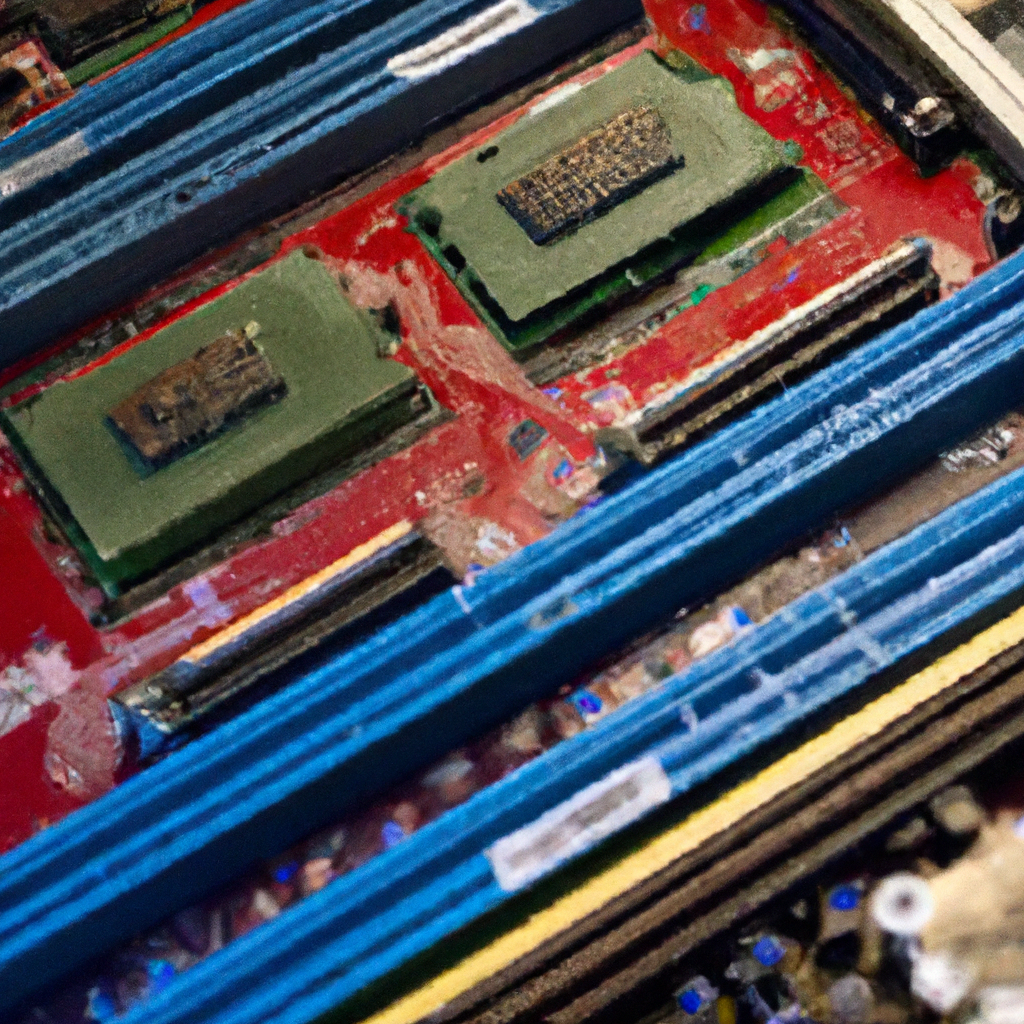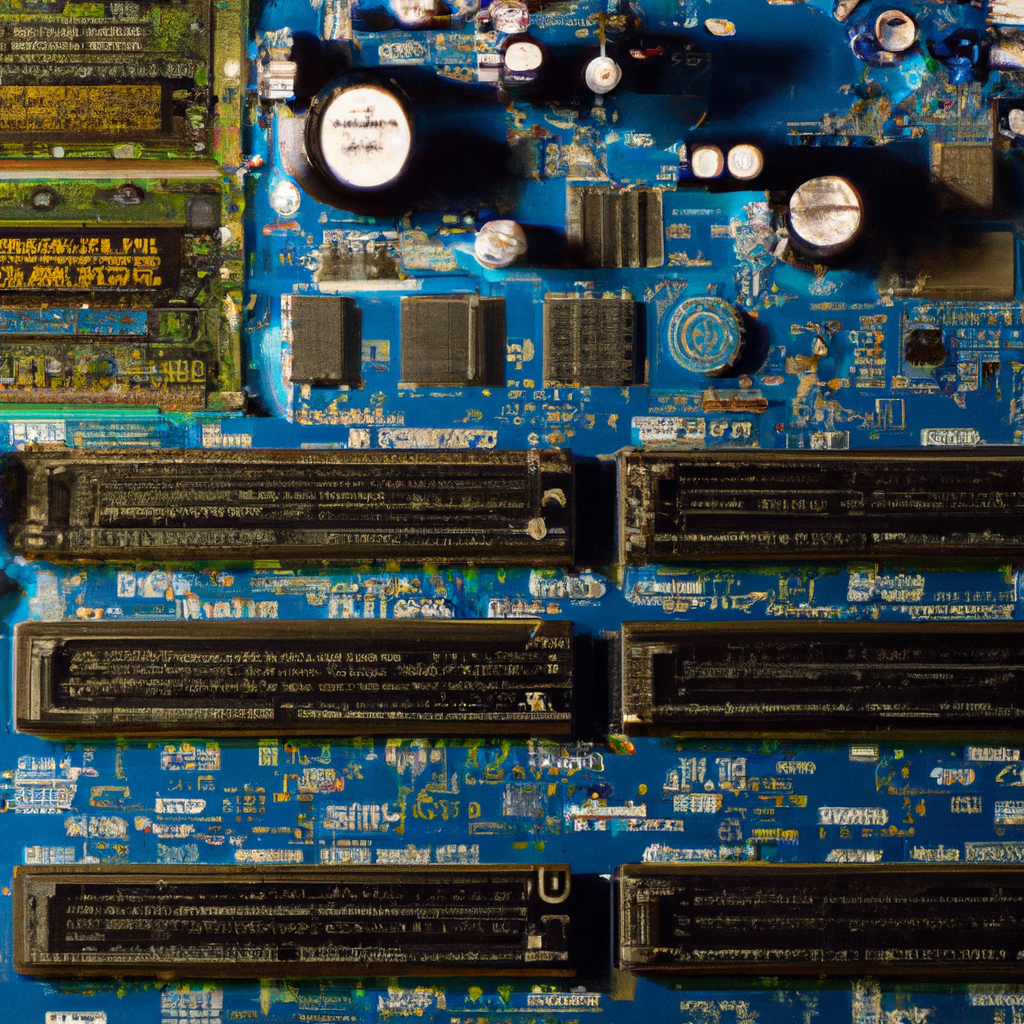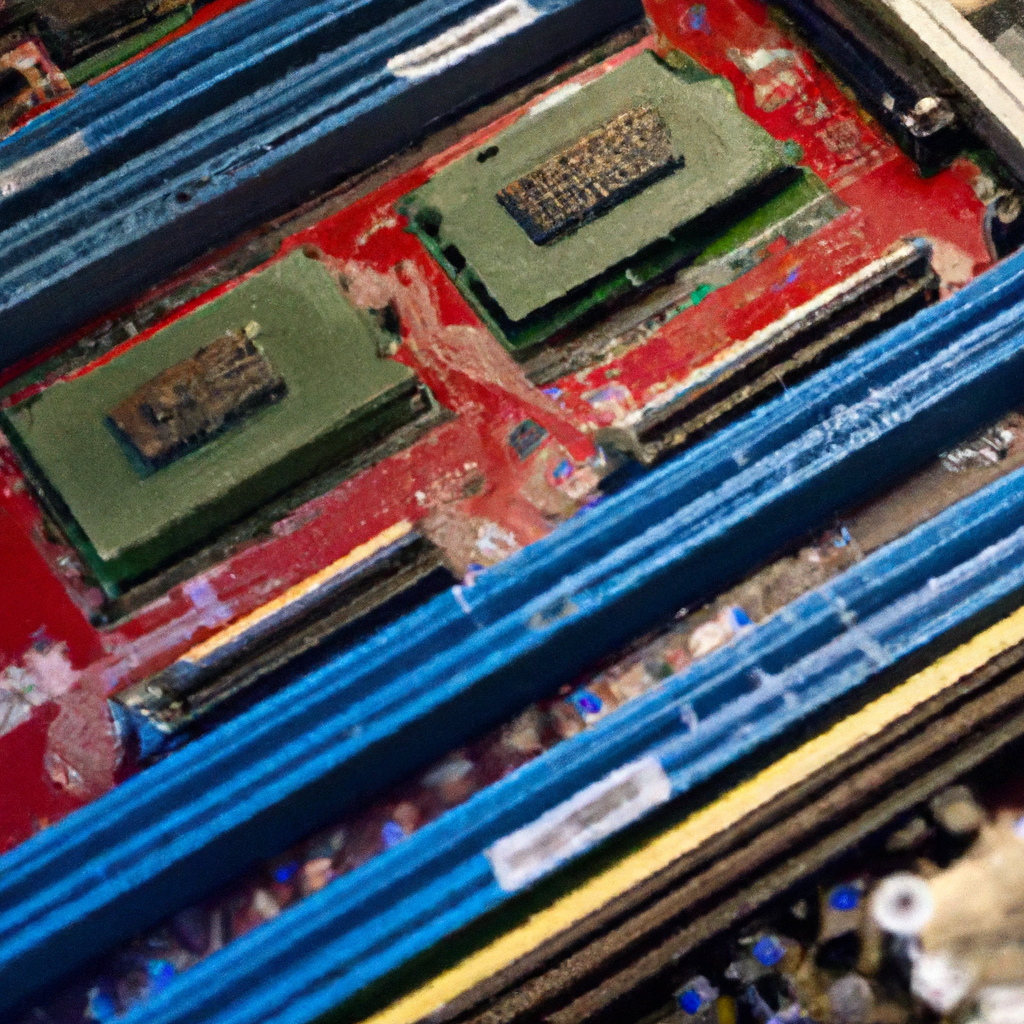If you’ve ever found yourself scratching your head and wondering how much RAM you actually need for your computer, you’re not alone. With the constant advancements in technology, it can be confusing to keep up with the ever-growing numbers and specifications. One burning question that often arises is whether you should opt for 32 or 64 gigabytes of RAM. In this article, we’ll break down the basics and help you make an informed decision based on your usage and requirements. So, let’s dive into the world of RAM and find out which option is the right fit for you.
Understanding RAM
What is RAM?
RAM, or Random Access Memory, is a crucial component of a computer system that plays a vital role in its overall performance. It is a form of volatile memory that allows data to be stored and retrieved quickly by the computer’s processor. Unlike the long-term storage provided by a hard drive or solid-state drive, RAM provides temporary storage for data that is actively being used by the system and its software.
How does RAM work?
When you turn on your computer and launch a program, it gets loaded into the RAM for quick access by the processor. This allows the computer to read and write data much faster than it would from a hard drive, resulting in a more responsive and efficient system. RAM is organized into memory cells, each of which can store a specific amount of data. These cells are organized in a matrix, and the computer’s processor can directly access any cell in the matrix, hence the term “random access.”
Importance of RAM in a computer system
RAM plays a crucial role in the overall performance of a computer system. It determines the amount of data that can be processed simultaneously, and the speed at which it can be accessed. Insufficient RAM can lead to sluggish performance, frequent freezing or crashing of programs, and overall system bottlenecks. On the other hand, having an adequate amount of RAM allows for smooth multitasking, faster program loading times, and an overall enhanced user experience.
Difference between 32-bit and 64-bit
What is a bit?
A bit is the fundamental unit of data in computing and can have a value of either 0 or 1. Computers use bits to represent and process information, and a combination of bits can be used to represent larger quantities. In the context of computer architecture, the terms 32-bit and 64-bit refer to the size of the registers used by the system’s processor to manipulate and process data.
Difference between 32-bit and 64-bit systems
The main difference between 32-bit and 64-bit systems lies in the amount of memory they can address. A 32-bit system can address a maximum of 4GB of RAM, while a 64-bit system can theoretically address up to 18.4 million TB of RAM. This means that a 64-bit system has the potential to support much larger amounts of RAM, allowing for more complex and memory-intensive applications to run smoothly.
Advantages of using a 64-bit system
Using a 64-bit system has several advantages over a 32-bit system. Firstly, it allows for the utilization of larger amounts of RAM, enabling more efficient multitasking and improved performance with resource-intensive applications. Additionally, 64-bit systems are better equipped to handle large datasets, making them ideal for tasks such as video editing, 3D rendering, and scientific simulations. Lastly, as software developers continue to optimize their programs for 64-bit architectures, using a 64-bit system ensures compatibility with the latest software advancements.

RAM Capacity
Factors to consider when determining RAM capacity
Several factors should be taken into account when determining the optimal RAM capacity for a computer system. The primary consideration is the intended use of the system: whether it is for casual web browsing, gaming, content creation, or professional work. Additionally, the specific requirements of the operating system and software applications being used should also be considered. Lastly, future-proofing and the ability to upgrade the RAM in the future should be evaluated.
Minimum RAM requirements for different operating systems
Different operating systems have varying minimum RAM requirements. For example, Windows 10 (64-bit) recommends a minimum of 4GB of RAM, while macOS Mojave requires a minimum of 4GB for basic functionality. Linux distributions generally have lower RAM requirements, with some lightweight versions capable of running on as little as 1GB of RAM. However, it’s important to note that these minimum requirements may not provide an optimal user experience and may restrict the ability to run multiple applications simultaneously.
RAM requirements for specific software applications
Software applications vary greatly in their RAM requirements. Basic applications like web browsers and word processors typically require minimal amounts of RAM, while resource-intensive applications like video editing software or virtual machines may require significantly more RAM to run smoothly. Checking the system requirements provided by the software developer is crucial to ensure that the system has sufficient RAM capacity for the desired applications.
Impacts of RAM on Performance
Multitasking capabilities
The amount of RAM available directly impacts the system’s ability to multitask efficiently. With more RAM, your computer can maintain multiple programs and processes in memory simultaneously, allowing for seamless and swift switching between applications. This is particularly important for users who frequently work with multiple software applications or have a habit of keeping several browser tabs open simultaneously.
Speed and responsiveness of the system
RAM plays a crucial role in determining the speed and responsiveness of a computer system. When programs and data are stored in RAM, they can be accessed by the processor much faster than if they were stored on a hard drive. This results in quicker program loading times, faster data processing, and an overall snappier user experience. Inadequate amounts of RAM can lead to a system feeling sluggish, with programs taking longer to load and respond to user inputs.
Resource-intensive tasks and RAM usage
Resource-intensive tasks, such as gaming, video editing, or running virtual machines, require large amounts of RAM to function smoothly. These tasks often involve working with large datasets, complex calculations, and real-time rendering, all of which can quickly consume available memory. Having sufficient RAM to accommodate the demands of these tasks is essential to avoid performance bottlenecks and ensure a seamless user experience.

Considerations for Casual Users
Typical tasks performed by casual users
Casual users typically engage in a range of common tasks such as web browsing, emailing, word processing, and multimedia consumption. These activities generally do not require significant amounts of RAM unless they are performed alongside resource-intensive software like video or photo editing tools. For casual users, having enough RAM to comfortably handle day-to-day tasks without experiencing slowdowns or freezing is usually sufficient.
Recommended RAM capacity for casual users
The recommended RAM capacity for casual users depends on their specific needs and the applications they use. In most cases, 4GB to 8GB of RAM is adequate for casual users who primarily engage in basic tasks like web browsing, email, and document editing. However, opting for 8GB of RAM or more provides additional headroom for multitasking, especially if the user frequently works with multiple applications or keeps numerous browser tabs open simultaneously.
Upgradability and future-proofing
When considering RAM capacity, it is essential to think about future needs and the upgradability of your system. As software becomes more advanced and resource-intensive, the demand for RAM increases. By investing in a system with the capacity for additional RAM (e.g., multiple RAM slots or an upgradable configuration), casual users can future-proof their computers and easily upgrade their RAM if needed.
Considerations for Gamers
RAM requirements for popular games
Gaming is one of the most demanding tasks a computer can perform, with games often requiring significant amounts of RAM to deliver an optimal experience. The RAM requirements for popular games can vary greatly, but as a general guideline, 8GB to 16GB of RAM is recommended for most modern games. However, some AAA titles and games with highly detailed graphics may benefit from having 16GB or more of RAM.
Benefits of having more RAM for gaming
Having more RAM for gaming offers several benefits. Firstly, it allows for smoother gameplay by ensuring that game assets and data can be loaded quickly, reducing stuttering and lag. Additionally, more RAM enables gamers to run multiple applications simultaneously, such as game capture software or voice chat programs, without affecting game performance. Lastly, higher RAM capacity can future-proof a gaming system, providing headroom for upcoming games with even greater memory requirements.
Optimal RAM capacity for gaming
The optimal RAM capacity for gaming depends on various factors, including the specific games being played and the user’s multitasking habits. For most gamers, 16GB of RAM is a recommended starting point, as it provides sufficient memory for modern games and allows for multitasking without significant performance degradation. However, enthusiasts or individuals planning to play highly demanding games may opt for 32GB or more to ensure a smooth gaming experience and accommodate future game releases.
Considerations for Content Creators
Resource-intensive software used by content creators
Content creators often rely on software applications that are resource-intensive and require significant amounts of RAM to operate smoothly. These applications include video editing software like Adobe Premiere Pro, 3D modeling software like Autodesk Maya, and photo editing software like Adobe Photoshop. Working with high-resolution images and videos, complex effects, and large project files can quickly consume available RAM.
Recommended RAM capacity for different types of content creation
The recommended RAM capacity for content creators varies depending on the type of content being created and the specific software being used. For basic photo editing or graphic design tasks, 8GB to 16GB of RAM is often sufficient. However, for video editing, 3D rendering, or working with large datasets, content creators should consider 16GB or more, with some professionals opting for 32GB or even 64GB of RAM to ensure smooth performance when handling resource-intensive projects.
Effects of insufficient RAM on content creation workflow
Insufficient RAM can have significant impacts on the content creation workflow. When working with large files or complex effects, an inadequate amount of RAM can lead to slow rendering times, choppy playback, and increased project load times. This not only hampers productivity but also diminishes the ability to work in real-time and make quick adjustments. Content creators rely heavily on RAM to provide the necessary memory bandwidth for efficient data processing and manipulation, making adequate RAM capacity crucial for smooth workflow.
Considerations for Professionals
Professions that require high RAM capacity
Certain professions heavily rely on RAM to handle large datasets and run resource-intensive software applications. Professions such as video editing, 3D modeling and rendering, software development, scientific research, and data analysis often require high RAM capacity. Furthermore, professionals working with virtual machines or running simulations also benefit from having extensive RAM resources to enable smooth multitasking and efficient processing of complex tasks.
Minimum and recommended RAM capacity for professionals
The minimum and recommended RAM capacity for professionals depend on the specific requirements of their work. For professionals engaged in tasks such as video editing, 3D modeling, or software development, a minimum of 16GB to 32GB of RAM is generally recommended to ensure smooth performance with resource-intensive applications. However, professionals dealing with exceptionally large datasets or running virtual machines may require 64GB or more of RAM for optimal productivity.
Productivity gains with higher RAM capacity
Having higher RAM capacity can significantly enhance productivity for professionals. With more RAM, professionals can work with larger datasets and run resource-intensive software without encountering performance bottlenecks. This translates to faster rendering times, improved workflow efficiency, and the ability to work on complex projects with ease. Additionally, professionals who frequently work with multiple applications simultaneously benefit from increased RAM capacity, as it allows for seamless multitasking and faster data processing.
Considerations for System Upgrades
Compatibility with the existing system
When considering a RAM upgrade, compatibility with the existing system is crucial. Factors such as the type of RAM (e.g., DDR3 or DDR4) and the maximum supported RAM capacity of the system should be taken into account. It’s also important to verify the number of available RAM slots and ensure that the new RAM modules match the specifications required by the motherboard.
Cost considerations for upgrading RAM
The cost of upgrading RAM will vary depending on several factors, including the desired capacity, the type and speed of RAM, and the specific vendor or retailer. Generally, as RAM capacity increases, so does the cost. However, with advancements in technology and increased demand, RAM prices have become more affordable in recent years. Considering the benefits of improved system performance, the cost of upgrading RAM is often a worthwhile investment.
Evaluating the overall system performance
Before deciding to upgrade RAM, it is essential to evaluate the overall performance of the system and identify any existing bottlenecks. Upgrading RAM may not be the most effective solution if other hardware components, such as the processor or graphics card, are limiting system performance. Conducting a comprehensive analysis of the system’s performance and identifying potential areas for improvement will ensure that the RAM upgrade provides the desired enhancements without neglecting other potential bottlenecks.
Future Trends and Projections
Increasing demands of software and applications
As technology advances, software applications are becoming increasingly resource-intensive. This trend is driven by the need to support higher-resolution media, complex simulations, and artificial intelligence algorithms. As a result, the demands on RAM capacity are expected to grow, with future software requiring larger memory resources to operate optimally. Staying ahead of these demands by considering futureproofing and investing in higher RAM capacities can ensure that users can continue to run the latest software without performance compromises.
Advancements in technology and RAM requirements
Advancements in technology, particularly in areas such as artificial intelligence, virtual reality, and data processing, are likely to drive increased RAM requirements. These emerging technologies demand substantial memory resources to handle complex processing and deliver seamless user experiences. As these technologies become more prevalent and application developers strive to harness their full potential, RAM requirements are expected to continue to rise.
Predictions for future RAM needs
While it is difficult to predict exact future RAM requirements, it is clear that the demand for higher RAM capacities will continue to grow. As software becomes more advanced and resource-intensive, the need for larger memory resources will increase to ensure smooth operation and optimal performance. It is likely that even casual users will eventually require more RAM to handle everyday tasks efficiently, while professionals working with large datasets or complex simulations may need to consider 128GB or even higher capacities in the future.
In conclusion, understanding RAM and its impact on computer performance is essential for users of all backgrounds. Whether you are a casual user, a gamer, a content creator, or a professional, considering the appropriate RAM capacity for your specific needs will result in a more efficient and enjoyable computing experience. As technology continues to advance, keeping an eye on future trends and the growing demands of software will allow you to make informed decisions when it comes to upgrading your system’s RAM.
